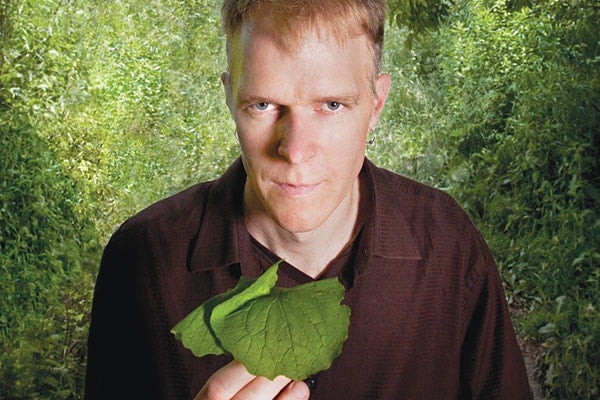
Using computer models to help our fragile ecosystem
Published: September 24, 2012
Global warming is well-known for its effect on the climate. But it also poses a threat to the world’s ecosystems. University of Toronto researcher Benjamin Gilbert wants to know more about that process.
Gilbert, an assistant professor in the Department of Ecology and Evolutionary Biology, examines the factors that enable species to co-exist in certain regions. “This has great importance in the context of climate change, acid rain and the arrival of invasive species,” he says. “We’re trying to get a handle on how things work and what is happening.”
To understand biodiversity, however, one must go to diverse areas. That’s because the mechanisms that drive one ecosystem can either be one-of-a-kind or can offer important lessons about other ecological communities. So Gilbert has travelled from northern boreal regions to the southern tropics, studying organisms as varied as tree seedlings and mosquito larvae. He has looked at environmental adaptation, the interaction of species and the spatial processes that promote or reduce diversity.
Studying complex ecosystems, though, requires sophisticated data management and processing technologies. And for that reason, computing plays a critical role in Gilbert’s research. In fact, without the aid of statistical models, he could very well spend all his time sorting data.
For example, in an ongoing project involving Jonathan Levine of the University of California, Santa Barbara, Gilbert is quantifying the effect of invasive grasses on native annual plants. Following a biological invasion, native species often experience reduced numbers and are forced to take refuge in small, sub-optimal areas. Using models and simulations, the researchers are generating estimates about whether these environmental changes will eventually lead to the extinction of native flora and, if so, how long it may take.
In some research projects, Gilbert is then able to compare the computer’s forecasts to actual data as a means of determining if the models are accurate. But that’s not always possible, especially when the simulations suggest that a species will become extinct in 600 to 800 years.
“Without any way to test or verify that information in the short term, you have to take it with a grain of salt,” Gilbert says. “But it does provide insight into what species we should be keeping an eye on, and gives us a testable hypothesis for the future.”
Is there hope for native species? Gilbert believes so. To that end, he would like his work to lead to more careful monitoring of species at risk of extinction. And, as a result of the increased scrutiny, governments may be prompted to take action. That could mean applying herbicides to invasive species or creating tree corridors to connect the fragmented, vulnerable forests that are left behind by fires, logging and agriculture.
“There are many ideas about how we can protect native species by reducing invaders or supporting fragile ecosystems. But without computer models, we have no way of predicting how well these interventions should work. We are beginning to use these models to make testable predictions — this will allow us to better apply the scientific method to conservation.”



